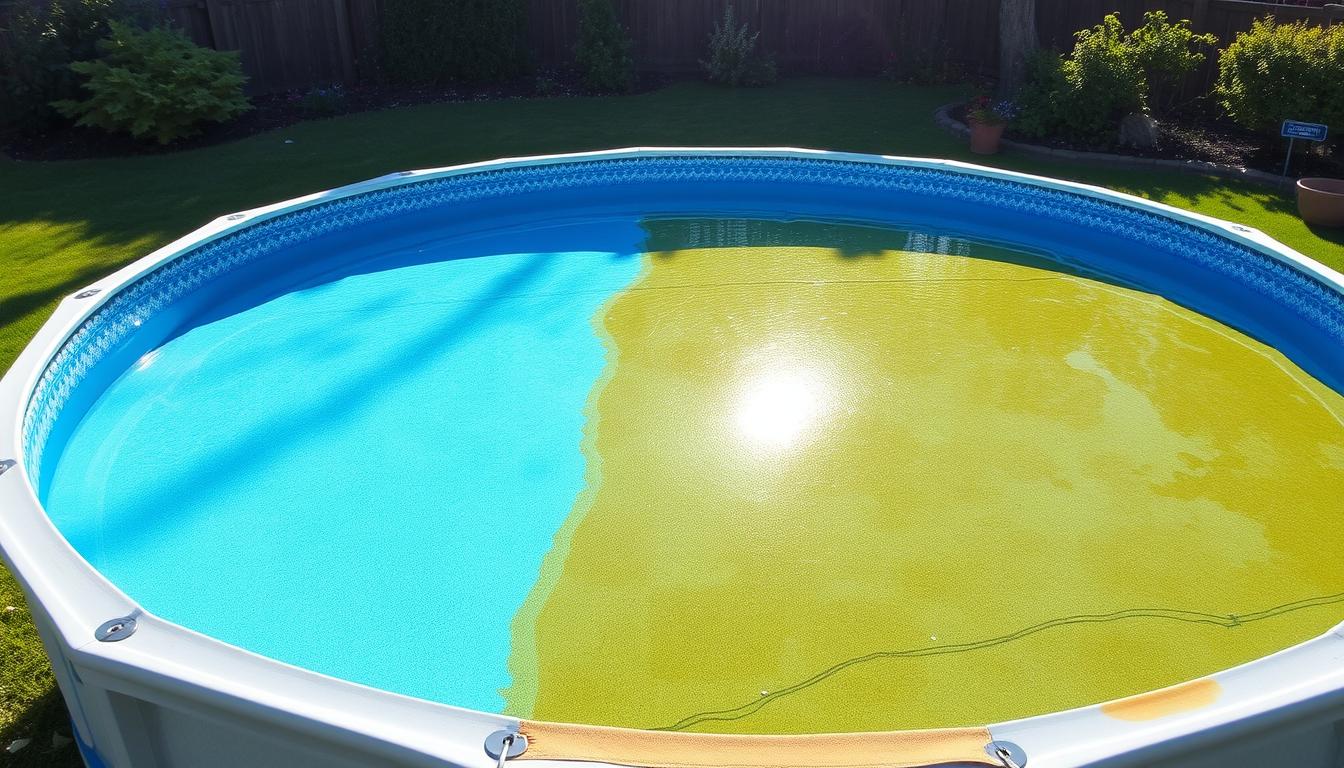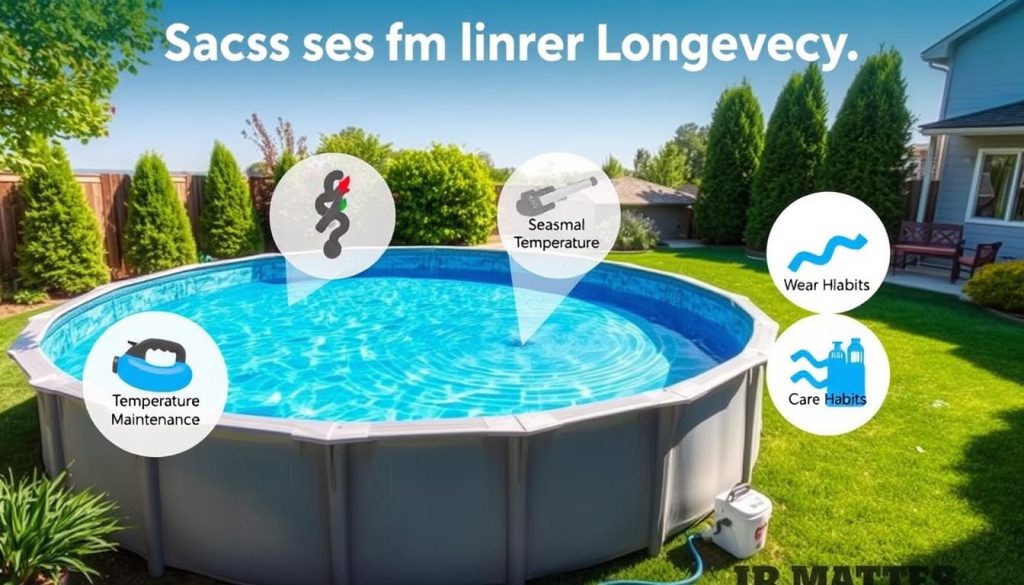
The average lifespan of an above ground pool liner is 6 to 10 years. This might surprise some pool owners. Understanding factors affecting liner durability can help extend its life.
Inground pool liners usually last 10 to 20 years. However, all pool liners need replacing eventually. Recognizing wear signs and maintaining your liner can maximize its lifespan.
Proper care helps avoid costly repairs and early replacement. Regular maintenance is key to keeping your pool liner in good condition.
Factors Affecting Above Ground Pool Liner Lifespan
Several factors impact the lifespan of above ground pool liners. These include maintenance, water chemistry, liner quality, and environmental conditions. Understanding these factors helps extend pool liner life.

Proper Maintenance and Care
Regular maintenance is key to extending pool liner life. Weekly skimming removes debris and prevents damage. Gentle scrubbing with a soft brush stops algae growth.
Addressing tears or leaks quickly prevents further damage. Good maintenance minimizes wear and tear on the liner. This reduces the chance of early deterioration.
Water Chemistry and Balance
Proper water chemistry preserves pool liner integrity. Unbalanced chemicals can cause wrinkling, sagging, and material breakdown. Regular testing and adjusting of water chemistry is crucial.
Keep pH, alkalinity, and chlorine levels in the right range. This helps protect the liner and extend its life.
| Chemical Parameter | Ideal Range |
|---|---|
| pH | 7.2 – 7.6 |
| Total Alkalinity | 80 – 120 ppm |
| Free Chlorine | 1 – 3 ppm |
Quality of the Liner Material
Liner quality and thickness affect its durability. Higher-quality, thicker liners last longer and resist damage better. Choose reputable brands with good warranties.
Investing in a quality liner saves money long-term. It reduces the need for frequent replacements.
Environmental Factors and Weather Conditions
Weather and environment can harm pool liners. Sunlight and UV rays cause fading and weakening. Extreme temperatures lead to expansion and contraction.
Use a pool cover or shade structure for protection. This minimizes environmental damage when the pool isn’t in use.
Taking steps to address these factors extends pool liner life. This ensures years of enjoyable swimming and reduces replacement costs.
Signs It’s Time to Replace Your Above Ground Pool Liner
Recognizing signs to replace your above ground pool liner is crucial. Early detection prevents damage and ensures safe swimming. Let’s explore common signs of worn pool liners.
Fading, Staining, and Discoloration
Pool liners fade due to chemicals and UV rays. This impacts the pool’s appearance. Stains from chemicals, rust, minerals, and algae can be hard to remove.
Significant rust stains and algae buildup indicate it’s time for a new liner. These issues affect both aesthetics and pool health.
Rips, Tears, and Cracks
Rips, tears, and cracks are clear signs for replacement. Aging vinyl liners become brittle, making patching difficult. Monitor water levels if cracks are found.
A water drop over one inch signals a leak. Patch leaks if possible to extend liner life. Undetectable leaks require liner replacement.
Wrinkling, Stretching, and Slipping
Vinyl liners lose elasticity over time. They may wrinkle, slip, or stretch. Wrinkles near returns and skimmers can damage from debris buildup.
Stretching leads to loose fittings around jets and skimmers. Beaded liners slipping out of track indicate end of life. This can lead to costly repairs.
Water Leaks and Loss
Water leaks and loss clearly show liner replacement need. Groundwater problems can shorten liner lifespan. Incorrect manufacturing specs may cause premature wear.
Regular inspections help detect leaks early. This prevents major damage to pool structure and surroundings.
| Sign of Wear | Cause | Solution |
|---|---|---|
| Fading and discoloration | UV exposure and chemical imbalances | Replace liner |
| Rips, tears, and cracks | Aging and brittleness | Patch if possible, replace if necessary |
| Wrinkling and stretching | Loss of elasticity | Replace liner |
| Water leaks and loss | Groundwater issues or manufacturing defects | Replace liner |
Watch for these signs and address them quickly. This keeps your pool safe and enjoyable. Spring or fall are best for liner replacement.
Work with a trusted pool service provider. They can replace your liner in five to seven days. This minimizes downtime and maximizes swimming fun.
Conclusion
Understanding pool liner lifespan helps owners plan for maintenance and replacements. Proper care, water chemistry, and quality affect how long liners last. Vinyl liners typically last 7-12 years, while fiberglass can endure up to 25 years.
Polymer liners can last up to 20 years with good care. Regular cleaning, pH monitoring, and water balance are key to extending liner life. Professional inspections can spot issues early, preventing costly replacements.
When replacing, consider liner thickness, quality, and installation costs. These can range from $1,000 to $3,500 depending on pool size and materials. Watch for signs of wear like fading, rips, wrinkles, or leaks.
Addressing these issues promptly keeps your pool in top shape. With proper maintenance and timely replacements, you’ll enjoy your backyard oasis for years. This approach minimizes costs and maximizes your pool liner’s lifespan.







